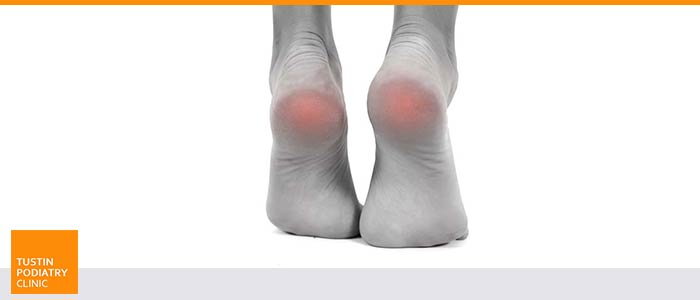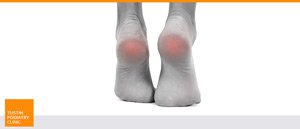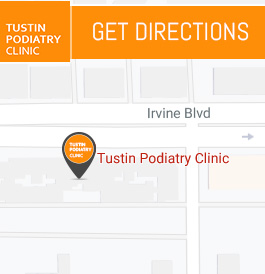Flat Foot Specialist in Tustin, CA
Flat feet are a condition in which there is no natural arch in the foot when standing. This may be a complicated problem with varied signs and degrees of deformity and functioning. It can cause pain, as well as ankle instability and foot abnormalities. Do you suffer from flat feet and have pain because of it? At Tustin Podiatry, Dr. Charles Baik DPM specializes in flat feet and can provide the treatment that you need. For more information, contact us or schedule an appointment online. We are conveniently located at 17400 Irvine Blvd. Suite H, Tustin, CA.


Table of Contents:
Can flat feet cause problems?
Can flat feet be corrected?
Do flat feet get worse over time?
Flat feet are when the arches of your feet lay flat on the ground, allowing the soles of the feet to fully touch the ground. Flat feet can occur during childhood, if the arches of the feet don’t develop properly, or later on in life from stress-related issues. Although it is usually pain-free, flat feet can affect the alignment of the legs, which leads to pain in the knees and ankles. If you are experiencing pain due to flat feet, it is recommended to seek medical treatment.
Flatfeet occur when the arches on the inside of your feet are flattened. This allows the entire sole of your foot to touch the floor when you are standing. Having flatfeet is common and usually painless. Flatfeet can occur when the arches don’t develop during your childhood years. Flatfeet can also develop as a result of injury or from the simple wear-and-tear stresses of age.
Flatfeet can sometimes cause problems in the ankles and knees because this condition often alters the alignment of your legs. If you aren’t experiencing any pain, treatment is usually not necessary. Most people have no symptoms associated with this condition, while others with flatfeet experience foot pain, particularly in the arch and heel area. This pain may worsen with activity and swelling along the inside of the ankle can also occur.
These are some factors that can increase your risk of having flatfeet:
• Obesity
• Injury to your foot or ankle
• Rheumatoid arthritis
• Aging
• Diabetes
Sometimes physical therapy can be used to correct flat feet if they are the result of overuse injuries or poor form or technique. Usually, surgery isn’t needed for flat feet unless they are caused by a bone deformity or a tendon tear or rupture.
Painful flatfoot can usually be treated with orthotics, braces, and other non-surgical treatments. People that acquired flatfoot as adults differ from children in that, children will usually outgrow flatfoot on their own, whereas adult flatfoot usually remains permanent.
We recommend to seek treatment if your flatfoot causes discomfort, leads to pain elsewhere in the body, or indicates an underlying disorder. Some people’s feet appear to have a very low arch or no arch and never experience problems. When flat feet do cause symptoms, simple exercises and devices can help to minimize the discomfort. Physical therapy is usually required 2-3 times per week for 4-8 weeks or as needed to obtain treatment/personal goals. If you have tried everything above and your symptoms are still there, talking to your doctor about surgical options may be the next step to fix flat feet.
The importance of arches is because they provide flexibility and elasticity to the foot, as well as assist in shock absorption in almost every body movement. When there is no arch to absorb shock, it radiates to other joints in the legs and even the low back, causing discomfort and pain.
Over time, flat feet can lead to deformities, pain, or other conditions in the body, including:
Plantar fasciitis. The plantar fascia connects the heel to the front of the foot, and supports the foot during walking and other movements. When the fascia cannot adequately absorb shock from the movements of the body, they may become inflamed and result in heel pain and stiffness.
Foot deformities. Foot deformities can be a result of untreated flat feet. Bunions, hammer toe, and deformities in the toe joints are all problems that can arise from flat feet.
Knee and low back pain. Since flat feet cannot absorb shock from the movements of the body, the responsibility for this falls to other joints, particularly the hips, knees, and low back.
Affected spinal integrity. Flat feet can cause torque to the pelvis, knee, spine, and hip as these bones try to adjust for abnormal movement patterns caused by flat feet. This torque may add improper rotational forces to the spine, and potentially impact spinal curvature. Correlated postural changes in the spine include thoracic hyperkyphosis, cervical hyperlordosis, and increased lumbar lordosis.
If you or someone you know is suffering from complications due to flat feet, please contact our office to get in touch with a specialist to find a remedy for your situation. To book an appointment, call us or visit us online at www.tustinpodiatryclinic.com. Our office is located at 17400 Irvine Blvd. Suite H Tustin, CA.

Additional Services You May Need
▸ Heel Pain Treatment
▸ Laser Fungal Nail Treatment
▸ Ingrown Toenail Treatment
▸ Ankle Sprain Treatment
▸ Foot and Ankle Medicine & Surgery
▸ Orthotics Custom
▸ EPAT/Shockwave Therapy
▸ Hammertoe
▸ Arthritis Treatment
▸ Diabetic Foot Care
▸ Flat Feet Treatment
▸ Foot Warts Treatment
▸ ClarixFlo





